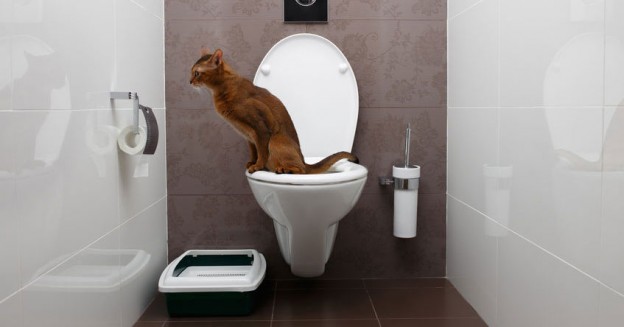They are making a number of great pointers relating to Can You Flush Cat Poo or Litter Down the Toilet? overall in this post down the page.

Intro
As pet cat owners, it's necessary to be mindful of just how we dispose of our feline friends' waste. While it may appear practical to flush feline poop down the commode, this technique can have destructive consequences for both the atmosphere and human health and wellness.
Alternatives to Flushing
Fortunately, there are much safer and more liable methods to get rid of feline poop. Take into consideration the following alternatives:
1. Scoop and Dispose in Trash
One of the most usual approach of dealing with cat poop is to scoop it into a naturally degradable bag and throw it in the trash. Be sure to make use of a dedicated trash scoop and deal with the waste promptly.
2. Usage Biodegradable Litter
Select eco-friendly feline litter made from products such as corn or wheat. These clutters are environmentally friendly and can be securely disposed of in the trash.
3. Bury in the Yard
If you have a backyard, think about hiding pet cat waste in an assigned area away from veggie yards and water sources. Be sure to dig deep adequate to avoid contamination of groundwater.
4. Mount a Pet Waste Disposal System
Invest in a pet waste disposal system specifically developed for cat waste. These systems use enzymes to break down the waste, lowering odor and ecological effect.
Health Risks
In addition to ecological worries, purging cat waste can also pose wellness threats to people. Cat feces might consist of Toxoplasma gondii, a parasite that can create toxoplasmosis-- a potentially extreme disease, specifically for expecting women and individuals with damaged immune systems.
Ecological Impact
Flushing feline poop introduces unsafe pathogens and bloodsuckers right into the water system, posturing a significant risk to water ecosystems. These pollutants can adversely influence aquatic life and concession water top quality.
Conclusion
Responsible pet ownership expands past providing food and shelter-- it also involves proper waste monitoring. By avoiding purging feline poop down the bathroom and selecting alternate disposal methods, we can decrease our ecological impact and safeguard human health.
Why Can’t I Flush Cat Poop?
It Spreads a Parasite
Cats are frequently infected with a parasite called toxoplasma gondii. The parasite causes an infection called toxoplasmosis. It is usually harmless to cats. The parasite only uses cat poop as a host for its eggs. Otherwise, the cat’s immune system usually keeps the infection at low enough levels to maintain its own health. But it does not stop the develop of eggs. These eggs are tiny and surprisingly tough. They may survive for a year before they begin to grow. But that’s the problem.
Our wastewater system is not designed to deal with toxoplasmosis eggs. Instead, most eggs will flush from your toilet into sewers and wastewater management plants. After the sewage is treated for many other harmful things in it, it is typically released into local rivers, lakes, or oceans. Here, the toxoplasmosis eggs can find new hosts, including starfish, crabs, otters, and many other wildlife. For many, this is a significant risk to their health. Toxoplasmosis can also end up infecting water sources that are important for agriculture, which means our deer, pigs, and sheep can get infected too.
Is There Risk to Humans?
There can be a risk to human life from flushing cat poop down the toilet. If you do so, the parasites from your cat’s poop can end up in shellfish, game animals, or livestock. If this meat is then served raw or undercooked, the people who eat it can get sick.
In fact, according to the CDC, 40 million people in the United States are infected with toxoplasma gondii. They get it from exposure to infected seafood, or from some kind of cat poop contamination, like drinking from a stream that is contaminated or touching anything that has come into contact with cat poop. That includes just cleaning a cat litter box.
Most people who get infected with these parasites will not develop any symptoms. However, for pregnant women or for those with compromised immune systems, the parasite can cause severe health problems.
How to Handle Cat Poop
The best way to handle cat poop is actually to clean the box more often. The eggs that the parasite sheds will not become active until one to five days after the cat poops. That means that if you clean daily, you’re much less likely to come into direct contact with infectious eggs.
That said, always dispose of cat poop in the garbage and not down the toilet. Wash your hands before and after you clean the litter box, and bring the bag of poop right outside to your garbage bins.
https://trenchlesssolutionsusa.com/why-cant-i-flush-cat-poop/

As a devoted reader about Can You Flush Cat Poo or Litter Down the Toilet?, I was thinking sharing that piece of content was worth the trouble. So long as you liked our blog entry kindly be sure to pass it around. Many thanks for going through it.
Explore